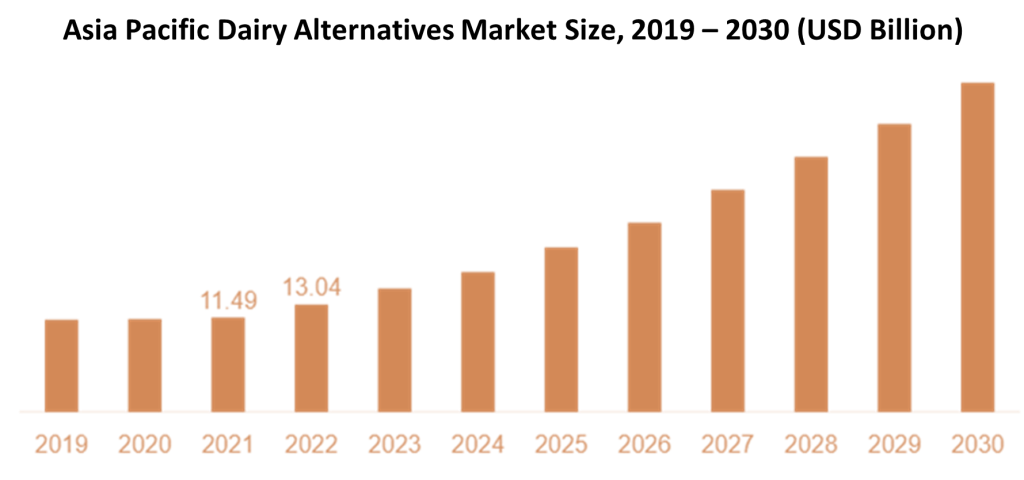In our modern context, three prominent sources of protein emerge: animals, plants, and microorganisms. Each has its pros and cons, making protein selection and consumption complex2. The plant-based movement has become increasingly popular and widely accepted in recent years.
Embracing the Flexible Path to Sustainable Eating
This remarkable shift has occurred with the emergence of a diverse and expansive consumer group known as “flexitarians” – individuals who are flexible vegetarians. Rather than eliminating meat and dairy from their diets completely, these individuals actively seek to decrease their consumption of animal-based proteins for a myriad of reasons. An observation reveals that 75% of the UK population, who opt for plant-based alternatives also continue to include standard dairy milk in their choices. This finding effectively emphasizes that the consumption of plant-based beverages extends beyond those strictly adhering to a plant-based diet5.
As a result, a sub-trend has emerged within the “plant-based” movements, known as “hybrid” products. These remarkable innovations blend the best of both worlds, combining the indulgent appeal of animal proteins with the nutritional benefits and diverse protein profiles of plant-based alternatives1. This harmonious blend holds the potential to yield a comprehensive and balanced amino acid (AA) profile, elevating the levels of a combination of dairy proteins (abundant in essential amino acids (EAAs); and plant-based proteins (renowned for their content of conditionally essential amino acids (CEAAs))3.
Elevating the Plant-Based Dairy Revolution
During the forecast period (2023 – 2030), the global plant-based dairy alternatives market size is poised to expand from USD 28.55 billion in 2023 to USD 69.84 billion by 2030, this exponential growth is forecasted at a CAGR of 13.63%4. In 2022, the dairy alternatives market witnessed Asia Pacific emerge as the largest region, while Western Europe secured the position of the second-largest region within this industry7. Nevertheless, a slight decline in the dairy alternatives market growth was discovered in 2020 and this is due to the COVID-19 pandemic caused a lockdown and hampered by 20% to 30% to the global trade scenario. Despite that, the surging preference for flexitarian, vegetarian, and vegan food choices have significantly driven the sales of dairy alternatives, and from the growth trend shown, it has potential to exert limitations on the revenue performance of the dairy sector4.

Asia demonstrates an exceptional affinity for plant-based proteins, as an impressive 75% of consumers in the region opt for plant proteins as their top choice for fulfilling their protein needs. This preference surpasses that of Europe (56%), North America (48%), and even the global average (61%)6.
Harnessing the Synergy of Dairy and Plant Proteins
The market potential of plant proteins is undeniably strong, yet many companies still encounter obstacles in effectively addressing concerns related to taste, texture, and nutritional optimization. Hence, by prioritizing hybrid formulations that combine plant proteins with other protein sources, manufacturers can seize an opportunity to introduce their plant-based solutions to a wider range of consumers. In doing so, they can overcome the hurdles of taste and texture challenges in formulations while simultaneously acquainting consumers with the substantial sustainability and nutritional advantages offered by plant proteins. In the APAC region, 87% of surveyed consumers revealed their strong preference for hybrid plant-animal protein products, outperforming the appeal observed in Latin America (86%), Europe (71%), and North America (69%)6.

Hybrid products offer a promising way to make animal-derived meat more cost-effective and sustainable while also improving the sensory appeal and taste of plant proteins. At DPO International, we offer a diverse selection of ingredients that can cater and boost both protein content and help your food business create a winning product. Contact us for more information.
References
- Cargill (2022). Dairy fusion delights: Hybrid concepts for increased plant-based eating. https://www.cargill.com/food-beverage/emea/infuse-by-cargill/hybrid-dairy-formulation.
- Chavassieu, O. (2023). Hybrid Foods: Is it the breakthrough the Alternative Protein Industry is looking for? Big Idea Ventures. https://bigideaventures.com/hybrid-foods-is-it-the-breakthrough-the-alternative-protein-industry-is-looking-for/
- Dijk, F. J., Hofman, Z., Luiking, Y. C., Furber, M. J., Roberts, J. D., van Helvoort, A., & van Dijk, M. (2023). Muscle protein synthesis with a hybrid dairy and plant-based protein blend (P4) is equal to whey protein in a murine ageing model after fasting. Nutrients, 15(11), 2569. https://doi.org/10.3390/nu15112569.
- Fortune Business Insights (2023). Dairy Alternatives Market Size, Share & COVID-19 Impact Analysis, By Source (Soy, Almond, Coconut, Rice, Oats, and Others), By Product Type (Non-dairy Milk, Butter, Cheeses, Yogurts, Ice Cream, and Others), By Distribution Channel (Supermarkets/ Hypermarkets, Convenience Stores, Online Retail, and Others), and Regional Forecasts, 2023 – 2030. https://www.fortunebusinessinsights.com/industry-reports/dairy-alternatives-market-100221.
- Howlett, C. (2020). Hybrid dairy products – leveraging the health halo of plants. Bord Bia – The Irish Food Board. https://www.bordbia.ie/industry/news/food-alerts/2020/hybrid-dairy-products—leveraging-the-health-halo-of-plants/
- Neo, P. (2022). ‘Winning Strategy’: Why hybrid meat/ plant protein products can help overcome taste and texture challenges. FoodNavigator Asia. https://www.foodnavigator-asia.com/Article/2022/02/17/hybrid-meat-plant-protein-products-can-help-overcome-taste-and-texture-challenges#.
- ReportLinker (2023). Dairy Alternatives Global Market Report 2023. https://www.globenewswire.com/news-release/2023/02/15/2608681/0/en/Dairy-Alternatives-Global-Market-Report-2023.html







